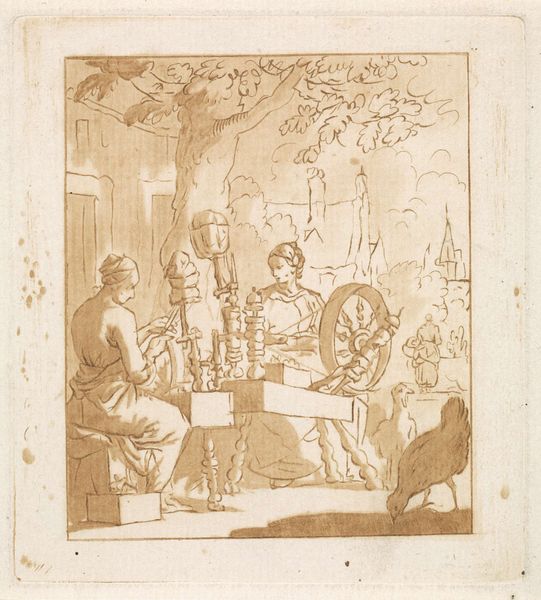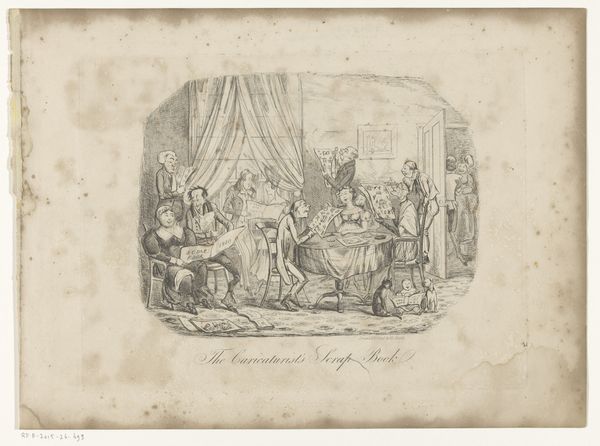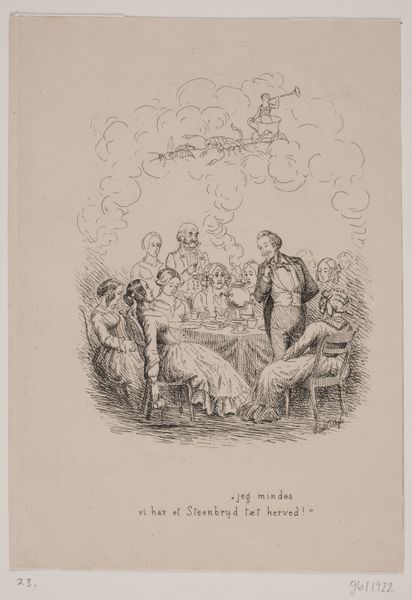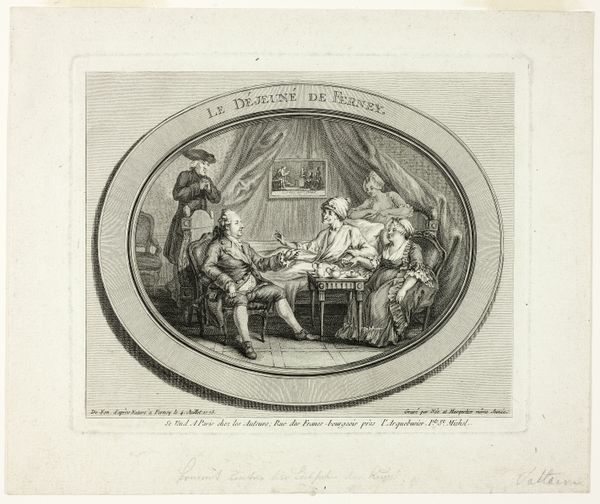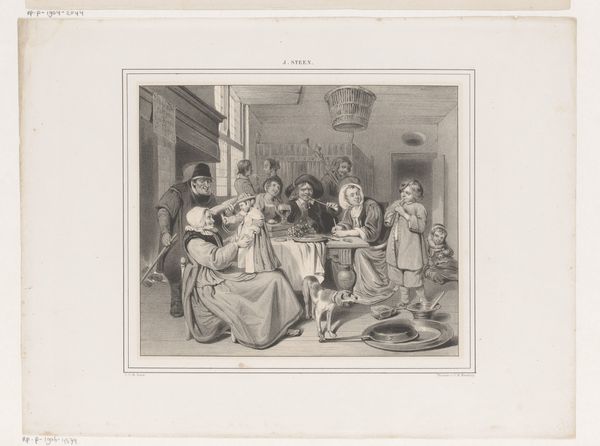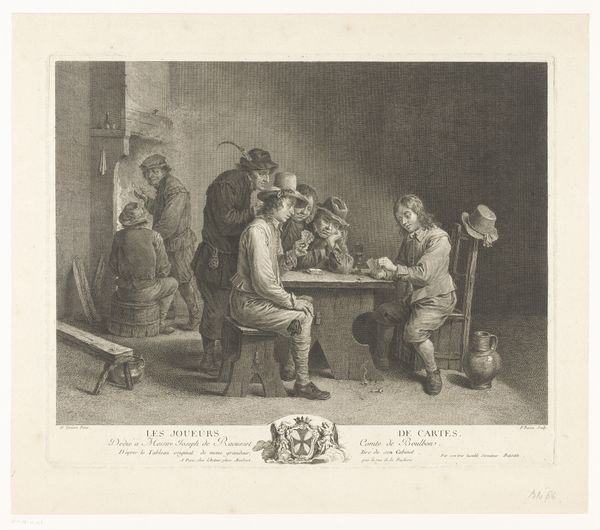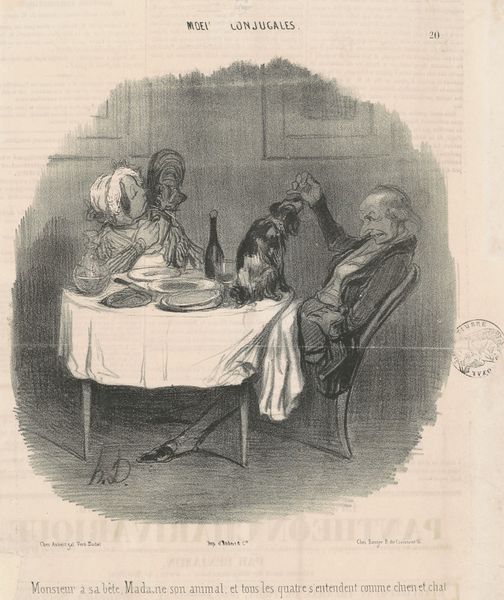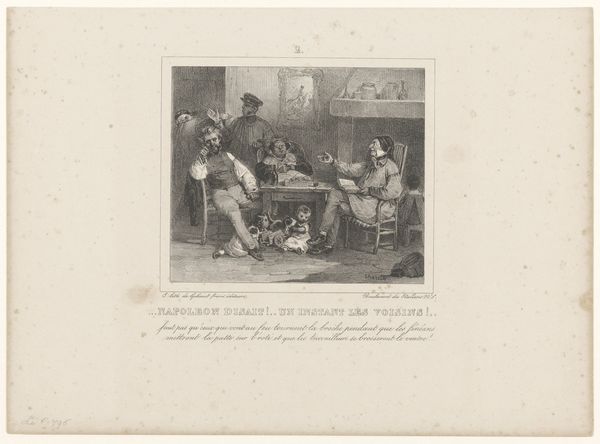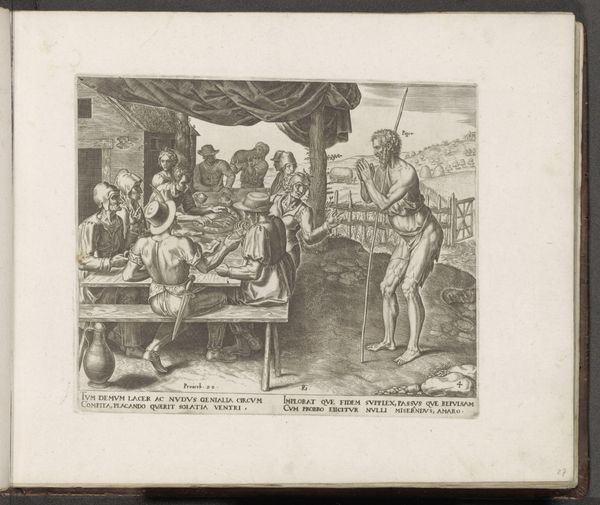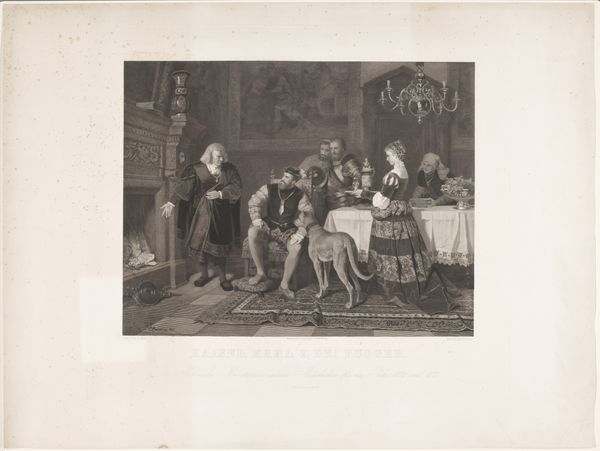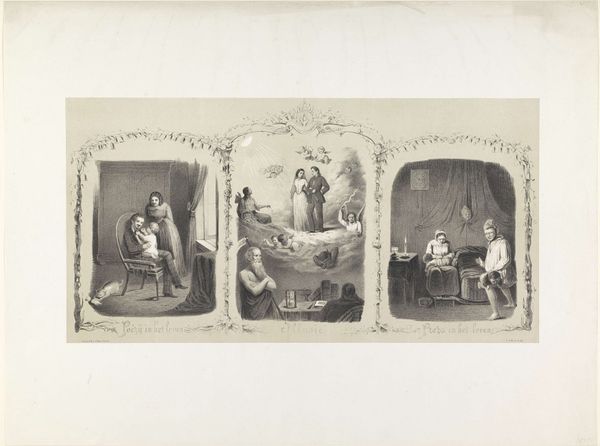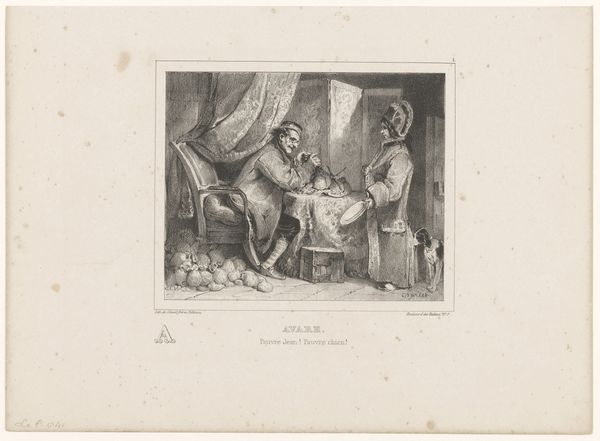
Napoleon en zijn vrienden in hun glorie, 1813 Possibly 1808 - 1813
0:00
0:00
thomasrowlandson
Rijksmuseum
Dimensions: height 273 mm, width 345 mm
Copyright: Rijks Museum: Open Domain
Curator: Here at the Rijksmuseum, we have “Napoleon and His Friends in Their Glory” by Thomas Rowlandson, dating probably from 1808 to 1813. It's an etching. What are your initial impressions? Editor: Dark humor, immediately. Napoleon is sharing a convivial drink, or so it seems, with a devil and a skeleton! It’s all presented with a delicate line but feels biting. Curator: Indeed. Rowlandson was a master of satire. This work is from a time when Napoleon's ambitions were turning sour with costly campaigns, particularly the disastrous invasion of Russia in 1812. The "glory" in the title is, of course, heavily ironic. It underscores the political instability during that era, achieved through sharp visual commentary. Editor: The skeleton, very obviously, represents death. But beyond that, there is perhaps the death of an era, of a political ideology? What does the pairing of the devil and Napoleon together suggest? Is it mere condemnation or something more nuanced? Curator: Well, you could consider the persistent motifs throughout Western art of leaders making "deals with the Devil" for power and dominion. But, more than just morality, it mirrors anxieties in Britain about the real cost—human and economic—of fighting these wars on the continent. Editor: I see that now; there is a tiny framed battle scene right over their heads, which appears very chaotic and brutal when you look closer. This links the dinner directly to violent outcomes of those campaigns. It's as though all this "glory" is purchased through very graphic and bloody sacrifices. Curator: Exactly. By putting Napoleon in this sort of darkly comedic domestic setting, Rowlandson makes his grand schemes all the more deflating. His etching, produced for a popular audience, served as a potent form of political critique. Editor: Considering it all now, it is a stark reflection, one that transcends the specific historical moment to speak about the insatiable thirst for power and the company it often keeps. A chilling but insightful portrayal. Curator: Precisely; looking at Rowlandson's satire can offer a sharp reminder about how visual imagery and media can shape, and critique, perceptions of leaders during periods of war.
Comments
No comments
Be the first to comment and join the conversation on the ultimate creative platform.
